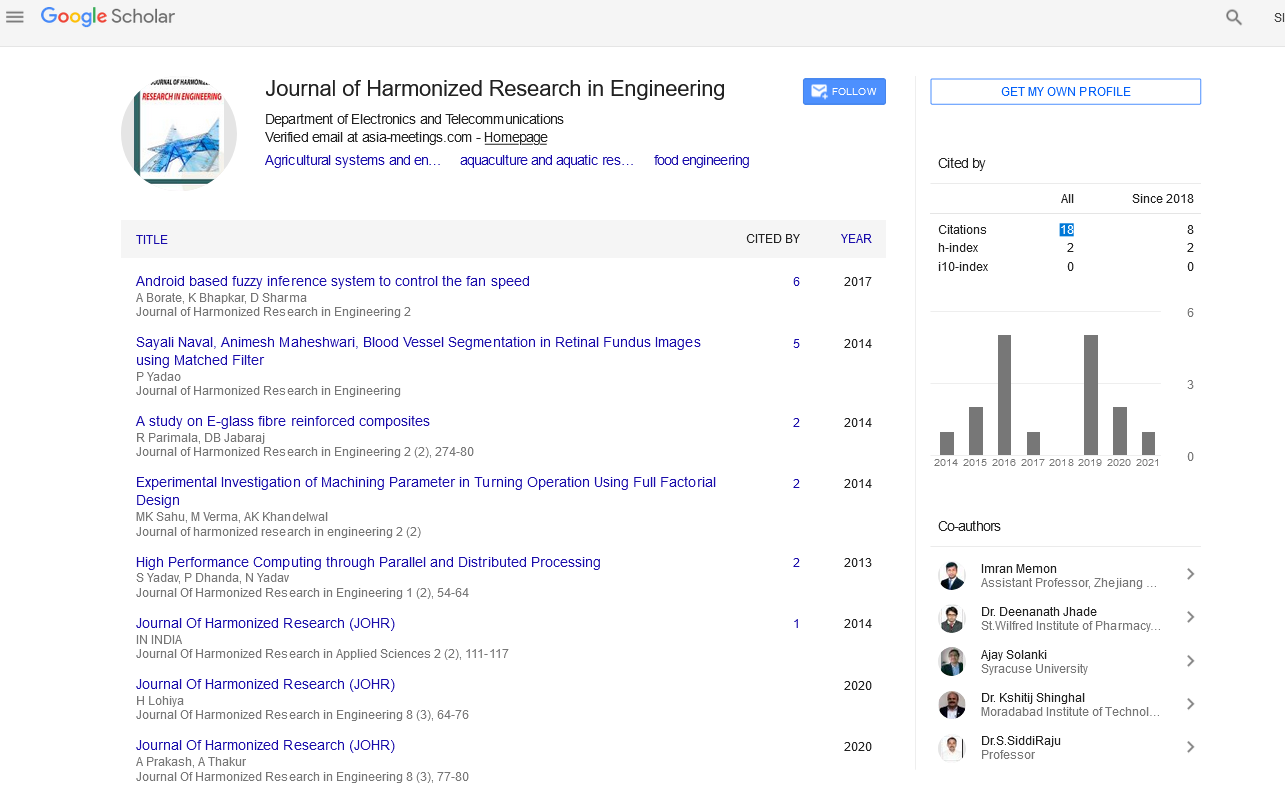Editorial - (2021) Volume 9, Issue 1
A BRIEF NOTE ON INFORMATION TECHNOLOGY
Tatsuya Endo*Received: Sep 02, 2021
Editorial
Information technology is the process of creating, storing, and accessing data. Although it is commonly used to refer to computers and networks, the term also covers other forms of information distribution technology, such as television and telephones. There are various products and services that are associated with this field. Early electronic computers, such as Colossus, used a long strip of paper called punched tape to represent their data. This technology is no longer used. The first practical application of electronic data storage was to remove the accumulated clutter from radar signals. Its predecessor, the floppy disk, was also used to store data.XML has been an integral part of data interchange since the early days. Its increasing popularity has largely been due to its ability to support machine-oriented interactions. Moore’s law refers to the exponential pace at which technological change occurs. For instance, the per capita capacity of computers to process information has doubled every 14 months since 1986. The per capita capacity of servers to store and broadcast information has also doubled every 3 years. Massive amounts of data are often stored globally each day, but unless they can be analyzed properly, they end up in what are typically referred to as data tombs. This field of data mining emerged in the 1980s.
Telecommunication is the process of transferring information by various means, such as radio, optical, and wire. It has its origin due to the desire for humans to be able to communicate over a distance that is greater than that of a human voice. Other examples of early long-distance communication include the use of coded drumbeats. Today, most communication technology used for long-distance use involve electrical and electromagnetic components. Evolution of wireless communication began in the 20th century following the discovery of radio communications by Guglielmi Marconi, who was awarded the Nobel Prize in 1909. Other noteworthy individuals include Elliot Morse, Alexander Graham Bell, and Charles Wheatstone. Telecommunications is defined as the transmission of signals, images, and intelligence of any nature, regardless of how it is done or perceived. Copper wires have been used for many years as the physical medium for transmission of signals. However, as the internet became more prevalent, voice was gradually replaced by data.A computer network is a group of computers that share resources located at or provided by the nodes of the network. These interconnections consist of telecommunication network technologies, based on wired, optical and radio frequency physical methods, which can be organized into various network topologies. Computer network nodes can include personal computers, servers, network hardware, or other dedicated or general hosts. They are identified by network addresses and can have host names. The host name is used as a memorable label for the node, and it rarely changes after the initial allocation. Network addresses are used to locate and identify nodes using communication protocols such as Internet Protocol.

Google Scholar citation report
Citations : 43
Journal of Harmonized Research in Engineering received 43 citations as per google scholar report









